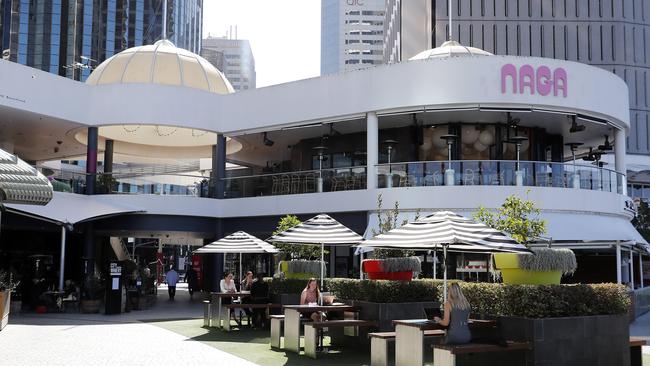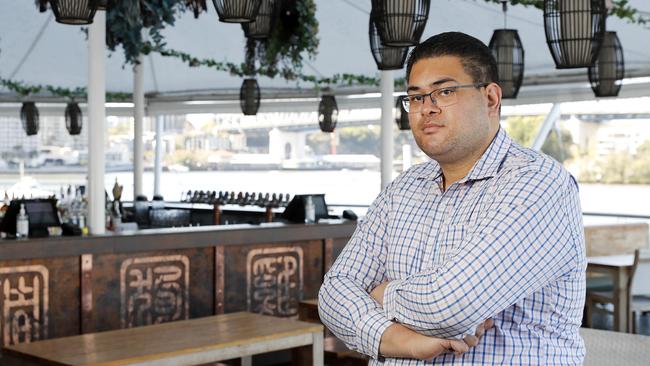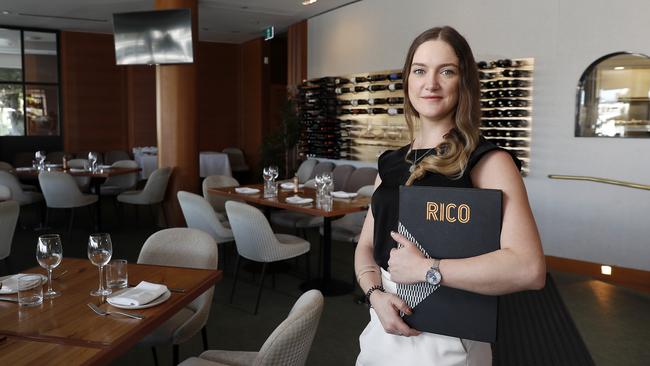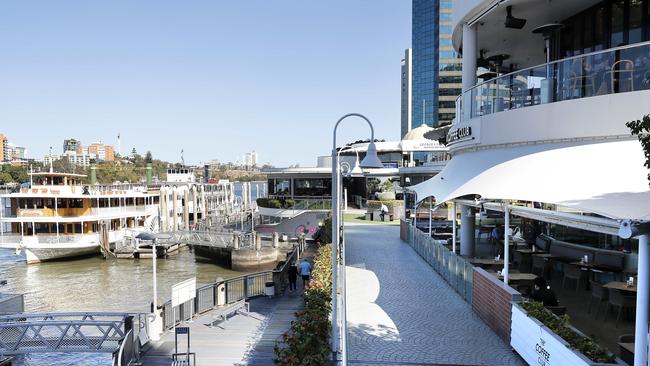Brisbane riverside restaurants along Eagle St pier say another lockdown will ‘kill’ CBD trade
Brisbane’s premier lunch district is bearing the brunt of deserted offices but holding on in hope that workers soon return to fill tables.

QLD Business
Don't miss out on the headlines from QLD Business. Followed categories will be added to My News.
Brisbane’s CBD restaurants are bearing the brunt of deserted offices with a warning many are unlikely to survive another lockdown.
The latest Property Council survey has found CBD office occupancy rates dropped to 60 per cent of pre-Covid levels meaning fewer diners at some of the city’s most popular eateries. Some outlet now close on Monday because of too few customers.
Veteran restaurant owner Phil Hogan, who owns the Jade Buddha in Eagle St with his brother Gary, said another lockdown would “kill” many outlets.
“We should be okay because we are a family-run business and run a fairly tight ship but many others would not survive,” said Mr Hogan.
He said his business’ turnover was still half of what it was before the pandemic and it was becoming harder to recover from each lockdown.
“It is like snakes and ladders, you go up and then you go all the way down,” said Mr Hogan. ”After each lockdown, revenue is usually only 10-15 percent of normal and it slowly picks up again.”

Mr Hogan said he had seen a fall off in the trade in the last week because of fears of the spread of the Delta variant
Coppa manager Ethan Summers said the lunch crowd was returning to his Eagle St restaurant but dinner bookings remained low because of a lack of interstate travel.
Mr Summers said lockdowns were expensive for the restaurant trade because owners were given little notice of the need to shut their doors.
“The last one we had ordered nine grands’ worth of food,” said Mr Summers. ”We had to bin half of it and give the rest to staff.”

Retail expert Professor Gary Mortimer said he doubted that the Brisbane CBD will return to pre-Covid activity with office workers, university students, tourists and general shopper numbers down.
According to Roy Morgan research, the average seven-day movement level in the Brisbane CBD was at 54 per cent of pre-pandemic levels in late August, up from a low of only 23 per cent in early August and its highest for nearly three months since late May.
“It’s very difficult to run a business where essentially five of out 10 customers are not walking past your front door,” Dr Mortimer said.
“It’s not unreasonable to think a medium sized accountancy firm or consultancy business would normally lease two floors but will only need one floor now because I can rotate my workers through.
“I don’t think it will be as bad as it seems now because borders will eventually reopen but Brisbane will remain challenged for some time.”
Queensland Property Council executive director Jen Williams said masks in the workplace, border closures, shifting goalposts for vaccination targets, and the ever-present risk of snap lock downs, had contributed to an increased number of employees once again working from home.
When the council‘s survey first began in July last year, Brisbane CBD occupancy was at just 48 per cent of pre-Covid levels. Prior to the pandemic, office occupancy in the CBD was about 90 per cent.

“While Brisbane’s occupancy rates had risen from this early low and become quite consistent month-on-month, August’s results have seen the city drop to a level of occupancy not seen since September 2020,” she said.
Ms Williams said anecdotally people were saying they’re working from home one to two days a week. “Landlords are saying people are keeping the same amount of space because they want to try and encourage the whole workforce to be together for at least one day a week so they can build teams and collaborate.”
Colliers International national director office leasing Adam Barrett said the CBD was unlikely to see the office market go back to what was normal.
“But the new normal will be a positive for the market,” he said.
“A large proportion of occupiers are currently exploring the WFH scenario, but I personally believe this solution will only work for a select group, and we are likely to see a majority of the workforce return to office — once mandatory wearing of mask’s inside are removed — with more flexibility from employers,” he said.




